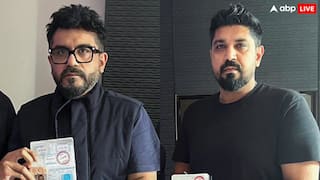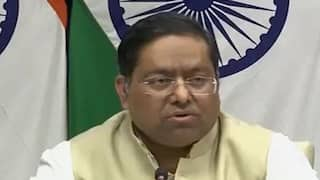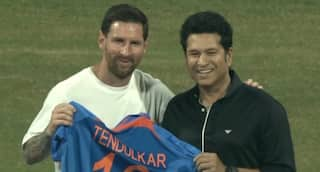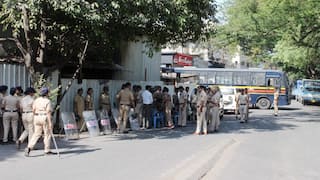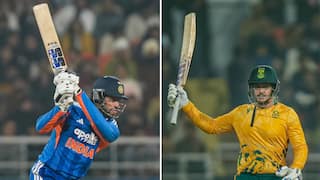Stem Cell Transplant: How It Is Done, Who Can Be Donors, And Its Impact On Patients’ Lives
Any healthy individual between the ages of 18-55 can register online with a stem cell registry as a potential blood stem donor. Registration requires a sample of cells collected from inside of cheeks.

By Dr Nitin Agarwal
In the realm of medical procedures, blood stem cell transplants stand as a beacon of hope for those battling blood cancers and related disorders like thalassemia, and aplastic anaemia. This groundbreaking procedure involves harnessing the power of healthy stem cells to revive a patient's ailing immune system. As we delve into the intricacies of blood stem cell transplants, here are the key components to remember: the procedure itself, the quest for matching donors, and the impact on patients' lives.
Any healthy individual between the ages of 18-55 can register online with a stem cell registry as a potential blood stem donor. Registration requires a sample of cells collected by swabbing the inside of the cheeks. The search for an unrelated donor begins when the requirement for a matching donor arises for a patient. The donor’s protein markers (HLA) are compared to those of the patient to find a potential match. The first basic search is initiated from the national registry; if a match is not found, the global and international registries are also checked to find the best possible match in the form of a donor. Indians have unique ethnicities; thus, adding more potential blood stem cell donors of diverse ethnicities will increase the chances for Indian patients to find a matching blood stem cell donor and get a second chance at life.
The stem cells in the healthy bone marrow produce all blood cells, including the white blood cells that are crucial to the immune system. Blood cancer damages a person’s bone marrow, and so do chemotherapy and radiation treatments for cancer. .A stem cell transplant lets new stem cells take over the damaged marrow so the body can produce healthy, cancer-free blood cells The ideal candidate for a blood stem cell transplant is a patient who has a disease that has not responded to chemotherapy or medicine, and there are no contraindications like systemic infections, major system dysfunction like cardiac, etc. For such a transplant to succeed, it is important that the HLA (Human Leukocyte Antigen) of the donor and patient are as close a match as possible. Tissue types (HLA) are passed from parents to children. Only about 30% of the patients in need of a stem cell transplant as a lifesaving treatment are able to find a sibling match. The rest 70% depend on finding a matching unrelated donor. This is where blood stem cell registries like DKMS BMST Foundation India come into play by enrolling adult, healthy, unrelated donors and facilitating blood stem cell donations.
MUST READ | The Science Of Health: How Stem Cell Transplants For Blood Cancers Work, And What The Challenges Are
When a donor is matched to a patient, they undergo tests, like the Confirmatory Typing (CT) process, where their tissue characteristics are analysed again using a blood sample to find if they are medically fit to donate. The donor is guided through each step, and a full body checkup is required to ensure their health status. Further, they have a medical assessment and consultation at a specialist collection centre (where they will later donate blood stem cells). Once they are cleared by the doctor, they donate blood stem cells by a process called peripheral blood stem cell collection.
The peripheral blood stem cell collection (PBSC), which is a harmless, non-surgical procedure, helps to collect blood stem cells. The process is similar to blood platelet donation, which takes approximately three to four hours to complete, and the donor can leave the collection centre on the same day. The body regenerates rapidly to get back to the level of blood stem cells that were prior to the donation. This is quite similar to how blood donation works in the way that blood stem cells are not lost permanently. The donor’s own immune system is also not weakened in this process.
MUST READ | The Causes Of Various Kinds Of Sickle Cell Disease, Their Symptoms And Treatment
Once the blood stem cells are collected from a donor and infused into the patient, they move through the bloodstream and settle in the bone marrow. Thus, the blood cancer patient gets a second shot at life as the newly infused blood stem cells multiply inside their body and produce healthy blood cells, replacing the patient’s affected cells.
Post-transplant care and follow-up are of paramount importance for blood cancer patients who have undergone a stem cell transplant. Key aspects of this comprehensive care strategy encompass monitoring graft function and conducting regular follow-ups for Graft versus Host Disease (GvHD) or disease relapse — initially every month for a year, with subsequent adjustments based on the patient's evolving condition. Additionally, post-transplant care includes vigilant monitoring for the potential side effects of immunosuppressants, addressing concerns such as infections, diabetes, eye issues, and kidney function. This attentive post-transplant care regimen aims to safeguard the health and recovery of individuals who have undergone stem cell transplantation.
A blood stem cell transplantation is often the only chance at survival for blood cancer and blood disorder patients. The diseases that can be treated by stem cell transplantation include blood cancers like Leukaemia, Lymphoma, and Multiple Myeloma, where stem cell therapy demonstrates its revival potential. Beyond cancer, this innovative treatment extends its reach to conquer various blood disorders such as Thalassemia, Aplastic Anaemia, Sickle Cell Disease, and Myelodysplastic syndrome. Furthermore, stem cell transplantation proves invaluable in addressing rare but formidable blood disorders like Fanconi’s Anaemia.
(The author is an MD in transfusion medicine, and HoD, Donor Request Management, DKMS BMST Foundation India).
[Disclaimer: The opinions, beliefs, and views expressed by the various authors and forum participants on this website are personal and do not reflect the opinions, beliefs, and views of ABP News Network Pvt Ltd.]
Check out below Health Tools-
Calculate Your Body Mass Index ( BMI )




























